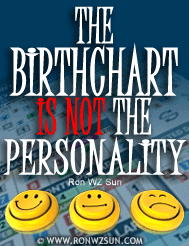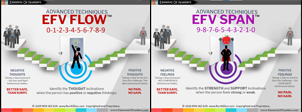Online Webinar on 12 June 2020
 About 30 FEN (Five Elements Numerology) students – from Singapore, Malaysia, Indonesia, and Thailand – attended my first FREE online webinar on Friday’s night (12th June 2020). As usual, everyone was excited, chatty, and enthusiastic during the webinar.
About 30 FEN (Five Elements Numerology) students – from Singapore, Malaysia, Indonesia, and Thailand – attended my first FREE online webinar on Friday’s night (12th June 2020). As usual, everyone was excited, chatty, and enthusiastic during the webinar.
Days before, I told them I would be sharing some profiling techniques to align everyone’s knowledge on the EON/FEN techniques. I’d usually share new finds during my FEN classes. For instance, those who attended my first few classes in early 2017, might not learn the additional techniques like the EFV-FLOWTM, EFV SPANTM, and unique DISC-EONTM Styles that I’ve shared in late 2019.
The webinar is not all about the materialistic pursuits; after all, FEN students recognised and appreciated the reasonable rates with premium-level lessons. It’s more about the after-class continual lessons, and my passion to share and raise the profiling standards of FEN students. This way, all students can keep themselves abreast with newer techniques and latest developments, as time goes by.
I also took the chance to try out a new online learning platform during the 2-hour session, which allows me to gauge the understanding among the students. Furthermore, as a certified adult educator, it’s significant for me to plan my lessons, be they via online webinar or in-person courses, to adopt the best practices for LDT (Learning, Development, and Training) for personal and/or adult development classes.
I started with a brief history of time – the EON milestones, and shared how my research and passion on the Elements of Numbers (EON) have “influenced me to be the best I can be” to a different level, to become what it is today, with better visualisation techniques, profiling relevance, and practical software tool. I included a few activities in the webinar session, to encourage the students to have fun and participate in the learning experience. They can gauge their understandings of the basic Five Elements cycles, and plotting of EON charts manually. It also allows me to gather immediate feedback of their attention span and understanding of the techniques just shared earlier, during the webinar.
 I’ve focused on three main techniques, which helped me to include as part of the remedial guidelines to provide to people who look for advice. For example, I told the students that most of the numerology courses conducted elsewhere were focusing mainly on identifying and asserting stereotype personalities. There were few trainers who could provide reasonable and logical advice beyond the standard ‘solution’ – like if you’ve strong Fire elements in your chart, the solution is to remain calm, relax, and control your emotions and tempers. That, to me, is common sense, but it’s simply not enough. There is the need to refer to some consistent guidelines we could suggest to a person to manage and minimise the impact of the negative vibes. And at the same time, they would know how they could manifest the positive vibes as well. That’s where the EFV FLOW and EFV SPAN were formulated by me some years ago, to resolve a piece of the profiling puzzle gaps.
I’ve focused on three main techniques, which helped me to include as part of the remedial guidelines to provide to people who look for advice. For example, I told the students that most of the numerology courses conducted elsewhere were focusing mainly on identifying and asserting stereotype personalities. There were few trainers who could provide reasonable and logical advice beyond the standard ‘solution’ – like if you’ve strong Fire elements in your chart, the solution is to remain calm, relax, and control your emotions and tempers. That, to me, is common sense, but it’s simply not enough. There is the need to refer to some consistent guidelines we could suggest to a person to manage and minimise the impact of the negative vibes. And at the same time, they would know how they could manifest the positive vibes as well. That’s where the EFV FLOW and EFV SPAN were formulated by me some years ago, to resolve a piece of the profiling puzzle gaps.
The aim of the EFV FLOW is to enable students to identify the thoughts flow influencing the behaviour of a person’s response to situations or problems. Once they have identified the key reference in a specific chart, they could then look for the EFV FLOW sequence to pick out the numbers associating to the positive and negative vibes. It’s a fast and direct manner, and it’s useable and relevant in many of my profiling analysis. When a positive number is identified, we could elaborate on the favourable aspects and traits associated with that number; to encourage the person we’re profiling to take action towards that direction. For example, if the positive number is 3, we could inspire the person to act decisively, put more passion, be creative and inspiring, and have a focused goal. Similarly, when we identified a negative number, we could caution the person to minimise exerting undesirable behaviours associated with the negative number. For instance, if the negative number is 8, we could advise the person to avoid stressing themselves unnecessarily, working endlessly hard without a goal, manage their emotions and temperaments, and anger.
The EFV SPAN is a new discovery made, and I’ve not shared in earlier FEN classes. The EFV SPAN has a different code sequence. The methods to identify the positive and negative numbers are similar, except that we are directly focusing on positive and negative feelings span – the STRENGTHS and SUPPORT inclinations. In a typical situation, when a person feels weak and indecisive, they’d check on the recommendations of others, before deciding the best choice to make. When the person is feeling secure, and their mind is clear and focused, they could decide the action and direction to take, without hesitating about the various choice options. In EFV SPAN, the access to such behavioural inclinations is similar. When the person feels strong and secured, they’ll subconsciously take a stride forward towards the STRENGTH number. When they feel weak, they’ll consciously take a step backwards toward the SUPPORT number.
Both the EFV FLOWTM and EFV SPANTM are unique finds that I’ve chanced upon, and exclusive to the EON/FEN method. Its relevance as a guideline reference makes it easier to FEN students to excel beyond personality profiling. It empowers them to tackle the LIFE PATH profiling with more confidence, knowing they’ve useful checklist on hand (or rather, on their device’s screen). By identifying both extreme end-positions of the EFV FLOW and EFV SPAN methods – negative and positive, strength and support – FEN students could provide alternative advices to others to create a better and positive behavioural response in any situation, issue, or problem faced.
 The other new discovery that I’ve shared during the webinar, is again, my decoding and formulation of the DISC behavioural styles, into the DISC-EONTM techniques. Some students were trained elsewhere, or familiar with the DISC profiling principles. I illustrated how we could easily correlate the DISC four-quadrants with the Elements of Numbers (EON) principles. It’s so comfortable to identify traits, behaviours, and actions lining to the DISC (Dominance, Influence, Steadiness, and Compliance) areas. I then displayed a DISC-EON chart of Donald Trump, and explained the relevance of the strong Compliance and Steadiness aspects, in relation to his EON Birth Chart, and the Five Elements’ life aspects. In Donald’s case, the DISC-EON chart shows the inclined behavioural styles associated to POWER and SELF-INTEREST. The DISC-EON technique allows FEN students another area to identify a person’s behavioural styles, using DISC terminologies with EON profiling interpretations.
The other new discovery that I’ve shared during the webinar, is again, my decoding and formulation of the DISC behavioural styles, into the DISC-EONTM techniques. Some students were trained elsewhere, or familiar with the DISC profiling principles. I illustrated how we could easily correlate the DISC four-quadrants with the Elements of Numbers (EON) principles. It’s so comfortable to identify traits, behaviours, and actions lining to the DISC (Dominance, Influence, Steadiness, and Compliance) areas. I then displayed a DISC-EON chart of Donald Trump, and explained the relevance of the strong Compliance and Steadiness aspects, in relation to his EON Birth Chart, and the Five Elements’ life aspects. In Donald’s case, the DISC-EON chart shows the inclined behavioural styles associated to POWER and SELF-INTEREST. The DISC-EON technique allows FEN students another area to identify a person’s behavioural styles, using DISC terminologies with EON profiling interpretations.
 The final part of the webinar is another exciting moment for those who attended the webinar – walkthrough of FEON+ Pro software, a WebApp-based application providing extended visual information. The current FEON+ v1.x is a BASIC version, supporting only Android devices. The FEON+ Pro is an ADVANCED version, targeting at FEN students and other profiling professionals who require more visual information on hand, anytime, as guidelines and references, to their analysis. The FEON+ Pro supports multiple device platforms. It even runs well on my old Nokia Lumia 635 phone, installed with Windows 10 Mobile. Due to the design layout of FEON+ Pro, it is not recommended for PCs, Macs, and Chromebooks, because of browser-specific design constraints. The FEON+ Pro is still at a work-in-progress stage, and there is no tentative timeline available. I’ve included some screenshots of FEON+ Pro (current project name: FEON+ v2) in recent case-study articles; and will continue to do so in future articles.
The final part of the webinar is another exciting moment for those who attended the webinar – walkthrough of FEON+ Pro software, a WebApp-based application providing extended visual information. The current FEON+ v1.x is a BASIC version, supporting only Android devices. The FEON+ Pro is an ADVANCED version, targeting at FEN students and other profiling professionals who require more visual information on hand, anytime, as guidelines and references, to their analysis. The FEON+ Pro supports multiple device platforms. It even runs well on my old Nokia Lumia 635 phone, installed with Windows 10 Mobile. Due to the design layout of FEON+ Pro, it is not recommended for PCs, Macs, and Chromebooks, because of browser-specific design constraints. The FEON+ Pro is still at a work-in-progress stage, and there is no tentative timeline available. I’ve included some screenshots of FEON+ Pro (current project name: FEON+ v2) in recent case-study articles; and will continue to do so in future articles.
 Those attending the webinar was excited about the additional features available during the webinar. The EFV FLOW, EFV SPAN, and DISC-EON charts are just three of the many new features ready for use in the software.
Those attending the webinar was excited about the additional features available during the webinar. The EFV FLOW, EFV SPAN, and DISC-EON charts are just three of the many new features ready for use in the software.
There are more than 20 additional visual information choices (including sub-options) currently available in the FEON+ Pro version. This means, you can now have better references to assist in your profiling analysis when you have the FEON+ Pro software tool. One popular question asked during the Q&A (Questions & Answers) session – is there a trial version that I can test out? Hmm… *=))
As in any online webinar with people logging in at different times, and some talking without muting their microphones – these little distractions are nothing, compared with the experiential learning lesson everyone enjoyed. I’m happy the webinar was a success, and glad the FEN students have found out something extra.
Regards, Ron WZ Sun

















